Something went wrong!
Hang in there while we get back on track
Best attractions in Naples
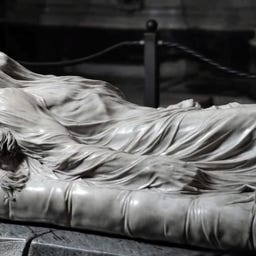
The chapel Sansevero is one of the most impressive masterpieces that you can and should see in Naples. The absolute highlights are the exquisite marble sculptures, such as the Veiled Christ by Giuseppe Sanmartino, which captures the appearance of a translucent shroud in marble with astounding precision.
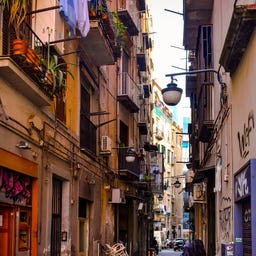
The historic center of Naples is a loud, chaotic maze of alleyways, baroque churches, and historic palaces. The main streets, Spaccanapoli and Via Toledo, are pulsing arteries where you can feel the true life of the city. The streets are filled with the aromas of Neapolitan street food like Pizza Margherita and Sfogliatella, freshly prepared at every corner.
As you dodge the mopeds, marvel at the unique nativity scenes on Via San Gregorio Armeno or buy a Cornicelli, a small red horn that serves as a lucky charm, as a souvenir. Here, you will also find the popular underground catacombs and several remarkable churches.
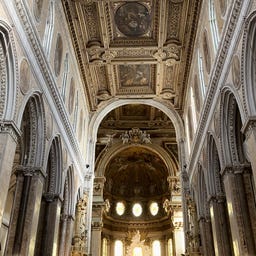
The Duomo di Napoli, also known as the Cattedrale di Santa Maria Assunta, is an outstanding example of Gothic, Baroque, and Neoclassical architecture. One of its highlights is the Royal Chapel of the Treasure of San Gennaro, adorned with exquisite Baroque decorations and frescoes.
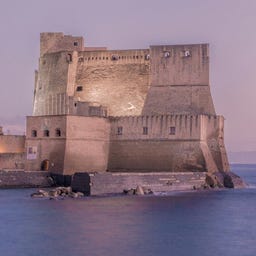
Built in the 12th century by the Normans, Castel dell'Ovo is the oldest fortress in Naples. Legend has it that the poet Virgil hid a magical egg in its foundations to protect the fortress. After destructions and rebuildings under the Angevins and Aragonese, the fortress now hosts events and exhibitions. Located on the small island of Megaride, it offers spectacular views over the Gulf of Naples from its towers and terraces.
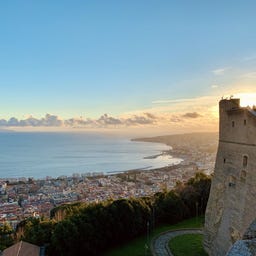
High above Naples on the Vomero Hill stands this impressive fortress from the 14th century. From its walls, one has the most beautiful panoramic views in Naples of Mount Etna, the picturesque bay, and the city. A highlight of any visit!

Napoli Sotterranea offers a fascinating journey into the underground right in the heart of Naples. This popular tour takes you through a labyrinth of ancient aqueducts, Roman tunnels from the 3rd century BC, and WWII air-raid shelters. A highlight is the Greco-Roman theater. Not for the claustrophobic —some passages are really narrow.
The tour lasts about 90 minutes and provides deep insights into the city's history. Tickets can be reserved online, and the meeting point is at Piazza San Gaetano.
Originally laid out by the Greeks, the Romans expanded the network into a complex aqueduct system. During World War II, these passages served as air-raid shelters.

This immense 2-story underground network is located a bit outside of the city centre. The catacombs date back to the 2nd century AD. In the 4th century the expansion of the catacombs began, when the first patron of Naples, Saint Agrippinus, was buried. The lower level includes the Basilica of St. Agrippino, and to this day Mass is celebrated here. In the upper level some of the earliest Christian paintings in the entire south of Italy can be found. The level includes the Crypt of the Bishops, in which the city's bishops were buried and the **basilica
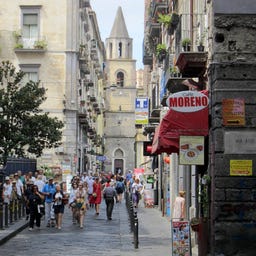
Via dei Tribunali is one of the oldest and most important streets in Naples. Along the street, which served as the main axis of ancient Greek and Roman Neapolis, there are more than twenty historic churches, including the Cathedral of Naples and the Basilica of San Lorenzo Maggiore with its ancient ruins. The path also leads to Napoli Sotterranea, an extensive network of underground tunnels.
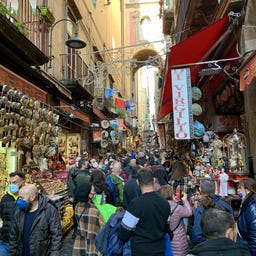
In the narrow Via San Gregorio Armeno, part of the UNESCO World Heritage site in Naples, you will find the most famous nativity scene artisans in Italy. The tradition of these craftsmen dates back to ancient times when small clay figures were offered as sacrifices in the Temple of Ceres.
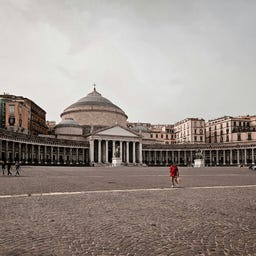
The Piazza del Plebiscito in Naples, one of Italy's largest and most stunning squares, serves as a central meeting point and city symbol. It is flanked by impressive structures, including the neoclassical Basilica di San Francesco di Paola and the Palazzo Reale.
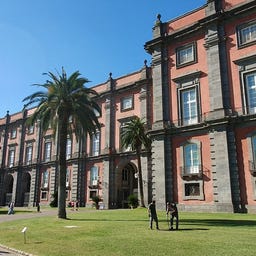
In the magnificent Palazzo Reale di Capodimonte, you will find one of Italy's most important art museums, which has officially been a national museum since 1957. The impressive collection, originally established by King Charles III of Spain for the Farnese collection, now includes masterpieces by Raphael, Titian, and Caravaggio, as well as a unique collection of contemporary art in Italy - featuring Andy Warhol's "Vesuvius."
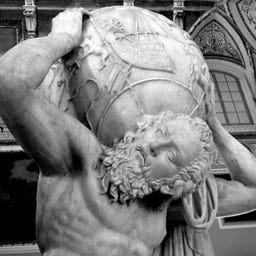
History enthusiasts take note: the museum houses treasures from Pompeii and Herculaneum, making it one of the world's most important archaeological collections. Highlights include the Alexander Mosaic and the Farnese Collection. The Secret Cabinet features ancient erotic art.
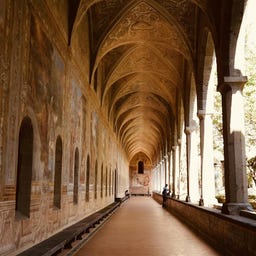
The Monastery Complex of Santa Chiara, renowned for its splendid majolica tiles, ranks among the most popular attractions in Naples. Commissioned by Robert of Anjou in the 14th century for his wife Sancia of Majorca, the basilica was meticulously reconstructed after the devastating destruction of World War II. Particularly noteworthy are the 17th-century cloisters adorned with colorful majolica tiles and frescoes on 72 columns, enhancing the peaceful monastery garden.
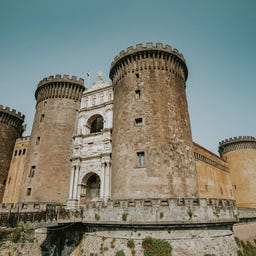
The impressive Castel Nuovo, also known as Maschio Angioino, has been overlooking the Piazza Municipio since the 13th century and is one of the most iconic landmarks of Naples. This fortress, flanked by five round towers, combines Gothic and Renaissance elements and now houses the city museum, featuring the remarkable Palatine Chapel.
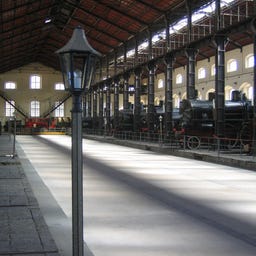
In the historic workshops of the former Royal Bourbon Workshops from the 19th century, you can today explore one of the most significant railway museums in Italy. Located right on the beach in Naples, the museum spans seven pavilions covering a total area of 36,000 square meters and presents you with the history of the Italian railway.
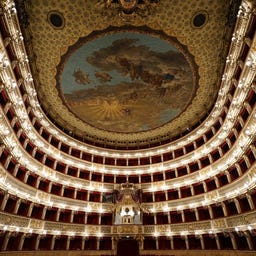
The neoclassical Teatro San Carlo, opened in 1737, is the oldest opera house in the world still in operation - it is decades older than Milan's La Scala. Originally built by King Charles III of Bourbon, the theater impresses guests with its outstanding acoustics and opulent interior, featuring golden decorations and blue upholstery—the colors of the House of Bourbon.

Built in the 17th century, the Royal Palace originally served as a residence for Spanish viceroys. Later, it became the seat of the Bourbon monarchs, who transformed Naples into a cultural center of Europe. Notable visitors included Napoleon Bonaparte and King Ferdinand II, as well as Goethe and Mozart.
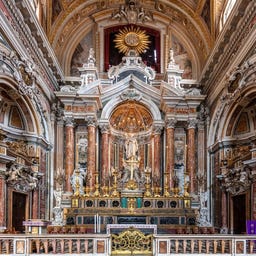
The facade of this unassuming church features small pointy pyramids, a style popular in the Venetian Renaissance. Inside the church houses one of the most beautiful interiors in Naples.
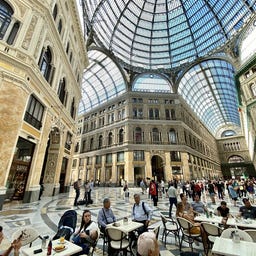
The Galleria Umberto I in Naples, built between 1887 and 1890, is an architectural masterpiece of the 19th century. Its cross-shaped structure, featuring a glass dome supported by 16 metal ribs, captivates with elegant mosaics and intricate sculptures. Originally designed as part of urban renewal, the Galleria now hosts a mix of shops, cafés, and offices, remaining a vibrant hub of Neapolitan life.
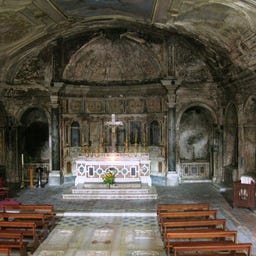
In the Catacombs of San Gaudioso, one of the oldest early Christian burial sites in Naples from the 4th-5th centuries, you can expect a fascinating journey beneath the streets of the Stella district. The entrance to this historic site is located in the crypt of the Madonna della Sanità church, where impressive frescoes from various periods and a 6th-century mosaic at the tomb of San Gaudioso await you.

Originally built in 1853 as a secret escape route for the king and his family, the tunnel stretches about 500 meters, connecting the royal palace to the sea. During World War II, it sheltered thousands of Neapolitans from bombings. Today, the tunnel, filled with antique vehicles, statues, and impressive architectural details, offers a fascinating glimpse into history and is a must-see for every visitor.

The "Veiled Christ" in the Cappella Sansevero in Naples is a breathtaking masterpiece by sculptor Giuseppe Sanmartino from 1753. This marble statue portrays the dead Christ draped in a delicate veil, so finely detailed it appears like real fabric. The intricate depiction of Christ's facial features and the signs of the Passion beneath the veil bring both pain and beauty vividly to life. Attracting visitors from around the world, this extraordinary artwork is enveloped in myths about its creation and the alchemical secrets of its patron, Raimondo di Sangro.
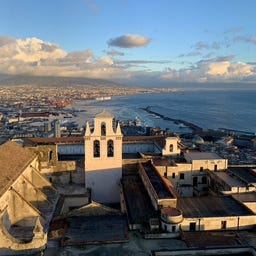
High above Naples stands the Certosa di San Martino, one of the largest religious complexes in the city, which has shaped the Vomero hill since 1325. In the approximately 100 rooms, two churches, and three cloisters, you will find the National Museum San Martino, which tells the cultural history of Naples from the Baroque period to modern times.
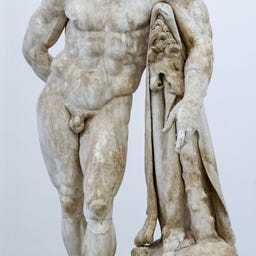
At the Archaeological National Museum of Naples, you can admire one of the most famous ancient marble sculptures in the world, the "Hercules Farnese." This impressive 3.17-meter tall statue was created by Glykon of Athens and depicts Hercules resting on his club, exhausted after completing his labors, while holding the golden apples of the Hesperides.
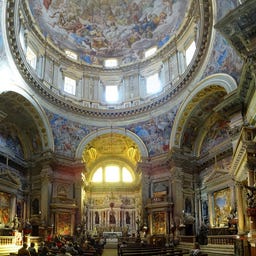
In the magnificent Baroque chapel Reale cappella del tesoro di San Gennaro in the Duomo di Napoli, you encounter one of the artistic highlights of Naples from the 17th century. Built between 1608 and 1646, the chapel was created as a result of a vow made by the city's inhabitants during a time of wars, plagues, and volcanic eruptions.
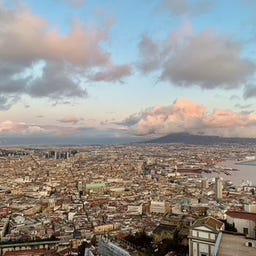
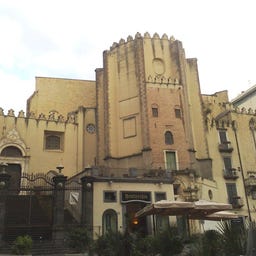
In the monumental Chiesa di San Domenico Maggiore, dating back to the late 13th century, you encounter one of Naples' most significant churches, built by Charles II of Anjou between 1283 and 1324. The Gothic basilica impresses with its three naves, 27 ornate chapels, and magnificent frescoes by Pietro Cavallini, while the baroque coffered ceiling from the 17th century provides an intriguing contrast to the medieval architecture.
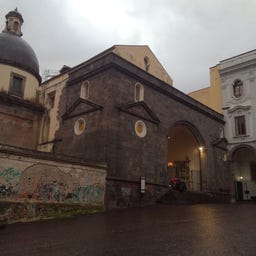
In the monumental Chiesa di Sant'Anna dei Lombardi, you will find an impressive blend of Renaissance and Baroque architecture right in the heart of Naples. Founded in 1411 by Gorello Origlia, the church was redesigned in the 17th century by Gaetano Sacco and houses significant Renaissance artworks, including masterpieces by Benedetto da Maiano and Antonio Rossellino.
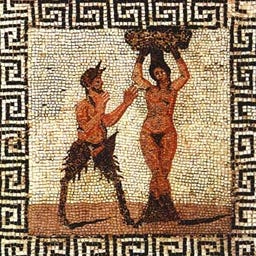
At the National Archaeological Museum of Naples, you will find the Gabinetto Segreto, an extraordinary collection of erotic artworks and everyday objects from antiquity. This controversial collection was established by the Bourbon kings and was long accessible only to select visitors; at times, it was even walled up until Garibaldi made it available to the public in 1860.
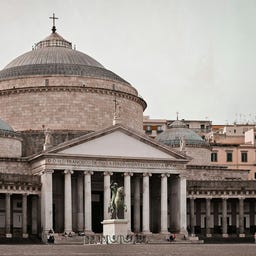
The majestic Basilica di San Francesco di Paola dominates the Piazza del Plebiscito in the historic center of Naples and is one of the most significant examples of neoclassical architecture in Italy.
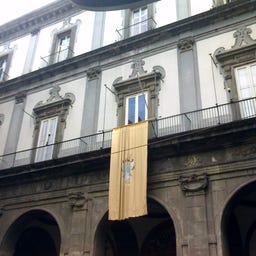
In the heart of Naples, you'll find the Pio Monte della Misericordia, an impressive blend of church, museum, and charitable institution from the early 17th century. The octagonal church houses one of the most significant works of Italian Baroque painting, Caravaggio's famous painting "The Seven Works of Mercy."

In the historic center of Naples, you'll find the Palazzo dello Spagnolo, an impressive example of Neapolitan Baroque architecture from the 18th century. Built in 1738 for Marquis Nicola Moscati, the city palace got its name from the Spanish nobleman Tommaso Atienza, who later expanded and artistically enhanced the building.
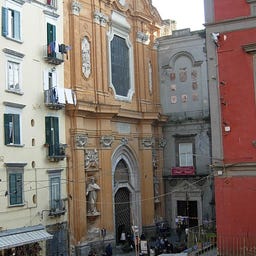
The Basilica di San Lorenzo Maggiore is one of the oldest monumental churches in Naples, blending French Gothic with Baroque elements into a unique ensemble. Beneath the church, built in the 13th century, you can discover fascinating archaeological excavations that date back to the 4th century BC, revealing remnants of the Greek and Roman marketplace.

In the magnificent Basilica del Carmine Maggiore, you will find one of the most fascinating churches in Naples, with a history that dates back to the 13th century. This church, designed in the Neapolitan Baroque style, houses the famous miraculous crucifix, which, according to legend, bowed its head in 1439 to avoid a cannonball.

High above the Gulf of Naples awaits you the Parco Virgiliano, a panoramic park covering 92,000 square meters in the Posillipo district. From its terraced viewpoints at a height of 150 meters, you can enjoy breathtaking views of the islands of Procida, Ischia, and Capri, the historic center of Naples, and Mount Vesuvius.
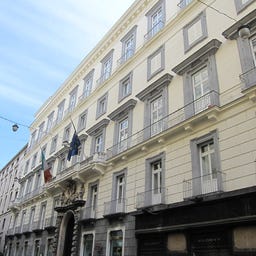
The Palazzo Zevallos on the bustling Via Toledo was built between 1637 and 1639 by Cosimo Fanzago for the nobleman Juan de Ceballos and today stands as an impressive example of Naples' architectural development from the 17th to the 19th century.
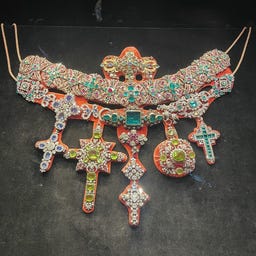
At the Museo del tesoro di San Gennaro, you will find one of the most valuable collections of religious art treasures in Italy, gathered since the 14th century. Over 700 square meters, you can admire magnificent jewels, including a mitre adorned with 3,694 gemstones from 1713 and a necklace that has been continuously expanded for over 250 years in honor of Saint Januarius.
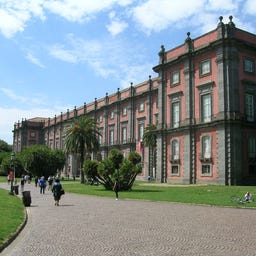
High above Naples stands the Reggia di Capodimonte, an impressive Baroque palace that Charles III of Bourbon had built in 1738 as a royal residence and museum for the Farnese collection.
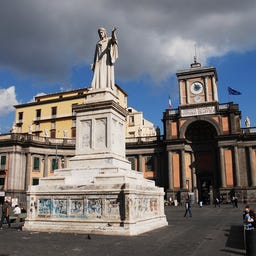
Piazza Dante in the historic center of Naples is one of the city's most important squares and marks the beginning of the bustling Via Toledo. Originally established as a marketplace in the 16th century, it took on its current form through Luigi Vanvitelli's impressive redesign in the late 18th century, with the centerpiece being the semi-circular Foro Carolino, adorned with 26 statues representing royal virtues.

The small volcanic island of Nisida off the coast of Naples has a rich history: In ancient Rome, Lucius Licinius Lucullus resided in his lavish villa here, while in the 15th century, Queen Johanna II fortified the island with a castle.
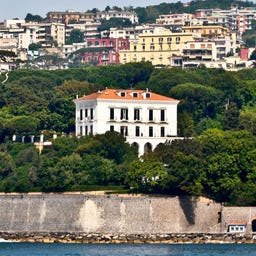
The magnificent Villa Rosebery sits majestically in a 6.6-hectare garden overlooking the Gulf of Naples and is one of the most significant examples of neoclassical architecture in the city. Originally built in the early 19th century by the Austrian nobleman Joseph von Thurn as a country residence, it later came into the possession of the British statesman Lord Rosebery, who significantly expanded the villa's art collection.

In the Chiesa Monumentale di Santa Maria la Nova, you will find an impressive blend of Gothic and Baroque architecture, with a history dating back to 1279. You can reach the church via a characteristic Piperno staircase with a marble balustrade, and it was rebuilt in the Baroque style at the end of the 16th century after several natural disasters.
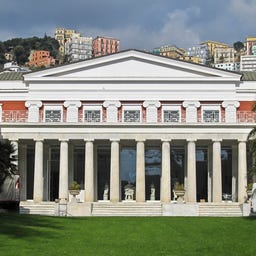
On the magnificent Riviera di Chiaia, you will find the neoclassical Villa Pignatelli, commissioned in 1826 by Sir Ferdinand Richard Acton. After a tumultuous history as a residence for the Rothschilds and later the Pignatelli family, this villa, built in Pompeian style, now houses two remarkable museums: the Museo Principe Diego Aragona Pignatelli Cortés, featuring valuable art collections from the 18th and 19th centuries, and the Museo delle carrozze, showcasing historical carriages.

The Chiesa di San Giovanni a Carbonara is one of the most artistically significant Renaissance churches in Naples, with a history dating back to the 14th century. In this magnificent building, featuring its impressive double staircase made of Piperno stone, you can admire remarkable artworks such as the monumental tomb of King Ladislaus and a crucifixion painting by Giorgio Vasari. The single-nave church, with its seven side chapels, was expanded in the 15th century and became a cultural center of the Renaissance, frequented by notable scholars like Giovanni Pontano. After suffering severe damage during the war in 1943, the church has been restored and now, along with the adjacent Santa Monica and the Church of Consolation, which serves as a crypt, forms an impressive complex in the historic center of Naples.
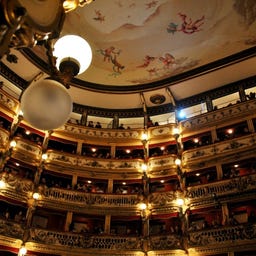
At the private Teatro Bellini in Naples, you can expect a charming theater in a horseshoe design with five box levels, which has experienced a rich history since its opening in 1864. Originally designed for circus performances, it transformed into a significant opera stage after renovations in the late 1860s, even hosting the Italian premiere of Bizet's "Carmen" in 1879.
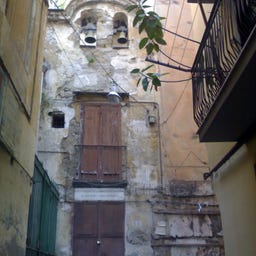
In the small church from the early 14th century, you discover a fascinating connection between life and death: the famous "skull with ears" is considered a particularly attentive mediator for prayers to the beyond.

In the Fuorigrotta district, you will find the Zoo di Napoli, one of the main tourist attractions in the Campi Flegrei region. Founded in 1950 by Franco Cuneo and Angelo Lombardi, the zoo initially thrived as one of the most significant animal parks in Europe but had to close in 2003 due to financial issues.

In the middle of Piazza Municipio, one of the most magnificent Baroque fountains in Naples rises - the Neptune Fountain, also known as "Fontana Medina," from the early 17th century. The sea god, created by Michelangelo Naccherino, sits majestically with his trident above a circular basin, surrounded by four water-spouting lions and an elegant balustrade. Neptune is accompanied by nymphs and satyrs, while intricately designed tritons and dolphins complete the ensemble. After several historical relocations and a comprehensive restoration, you can now find the fountain in front of the impressive Palazzo San Giacomo, where it has been shining in its full glory since 2015.
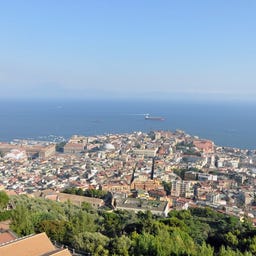
On the 60-meter-high hill of Pizzofalcone, where the ancient city of Partenope was founded in the 8th century BC, you can enjoy a breathtaking view over the Gulf of Naples.
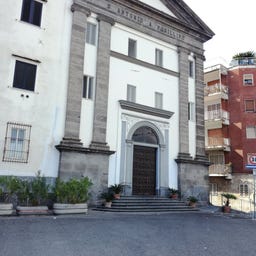
The Chiesa di Sant'Antonio has been overlooking the Gulf of Naples since the 17th century, offering you one of the most beautiful panoramic views of the bay from the church square. Originally used as a sanatorium, the building has evolved into an important pilgrimage church dedicated to Saint Anthony of Padua.
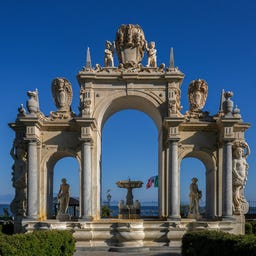
At Via Partenope, you'll find the impressive Fontana del Gigante, a fountain from the early 17th century created by artists Pietro Bernini and Michelangelo Naccherino.
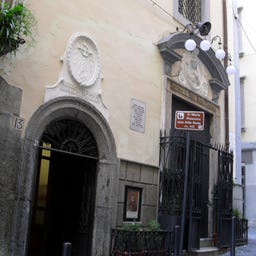
In the narrow streets of the Quartieri Spagnoli, you will find this special church from the late 18th century, established at the request of Ferdinand II of Bourbon in a former noble palace. The simple sacred building houses, alongside an altar and various artworks, a very special treasure: a chair believed to have miraculous powers, said to help women wishing to conceive.
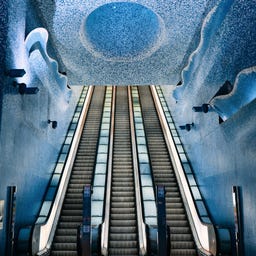
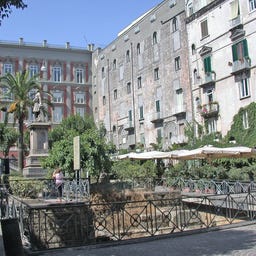
At Piazza Bellini, named after the composer Vincenzo Bellini, history and the present come together: here you can find not only remnants of the Greek city wall of Neapolis but also magnificent Renaissance palaces from the 16th and 17th centuries.
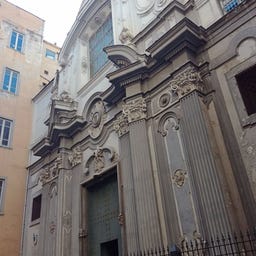
In the historic old town of Naples, you will discover the Basilica del Gesù Vecchio, a baroque church from the 16th century that is now part of the university complex. This magnificent building was founded by the Jesuits in 1554 and received its characteristic baroque facade from Giovan Domenico Vinaccia at the end of the 17th century.
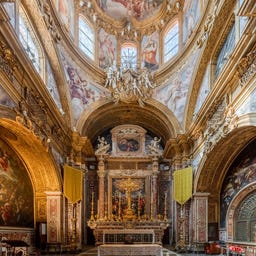
The Chiesa di San Gregorio Armeno is one of the most significant religious buildings in Naples, founded in the 8th century by Byzantine nuns who fled from Constantinople. In this magnificent Baroque church, you will find 62 biblical frescoes by the master Luca Giordano as well as an impressive cloister with a marble fountain from the 17th century.
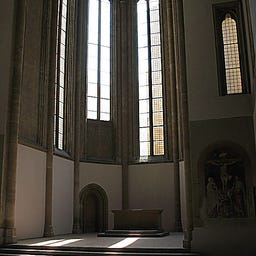
In the Chiesa di Santa Maria Donnaregina Vecchia, you will find one of the most significant fresco cycles in Naples from the 14th century, adorning the walls of the single-nave church. The original complex dates back to 780 and was rebuilt after an earthquake in 1293 with the support of Queen Maria of Hungary, whose magnificent tomb by Tino di Camaino still graces the left wall of the church.
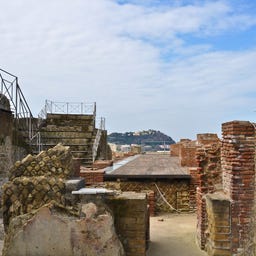
In the picturesque coastal region of Naples, you will find the Parco archeologico di Posillipo, which houses the impressive remains of an imperial villa from the 1st century BC. You enter through the Grotta di Seiano, a 770-meter-long tunnel carved into tuff stone that served as an air raid shelter during World War II.
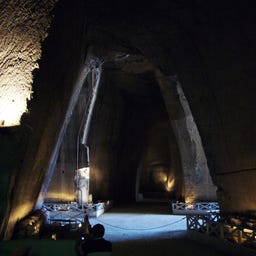
This cemetery in the north of Naples houses the skulls and bones of citizens who died during the pest and couldn't afford burial. This cemetery gives you insight into the Neapolitan Cult of Death or the Cult of Skulls. According to the Christian belief, abandoned souls who aren't completely free of sin are in Purgatory. Neapolitans believed, that if the living pray for the lost souls, they will get favours in return. Believers adopted a skull of an abandoned soul, cleaned, cared and prayed for it. In return, the person could ask for favours and protection. Please inform yourself before coming, as it seems that the cemetery may have been closed.
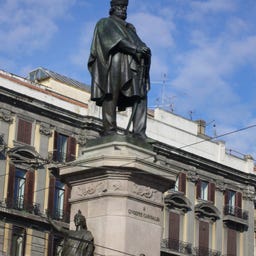
Piazza Garibaldi is one of the most important and lively squares in Naples, serving as a central hub for buses, trams, and two subway lines. Since its establishment in 1866, the square has undergone several transformations, evolving from the simple "Piazza della Stazione" to a representative city square featuring the statue of its namesake, Giuseppe Garibaldi, which was inaugurated in 1904.
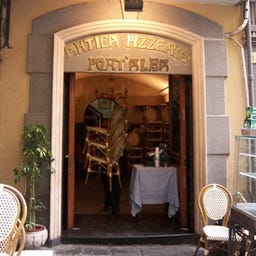
In the historic old town of Naples, you will find the Antica Pizzeria Port'Alba, which is considered the oldest pizzeria in the world. What started in 1738 as a simple food stall for street vendors evolved into a beloved institution for traditional Neapolitan pizza by 1830.
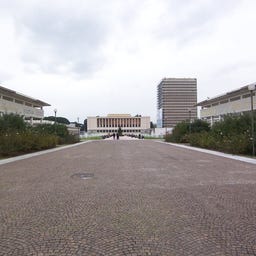
In the heart of Naples, the Mostra d'Oltremare spans 720,000 m², making it one of the most important exhibition centers in Italy, which opened in 1940 as a showcase of colonial achievements. After being destroyed and rebuilt due to the war, the expansive complex now presents a fascinating mix of rationalist architecture from the 1940s and modern exhibition pavilions. Between historic buildings like the Arena Flegrea and the Teatro Mediterraneo, you'll find extensive gardens, an aquarium area, and the monumental Fontana dell'Esedra. Designed by renowned architects such as Marcello Canino and Carlo Cocchia, the site is now a vibrant cultural and event center where festivals, concerts, and fairs are regularly held.
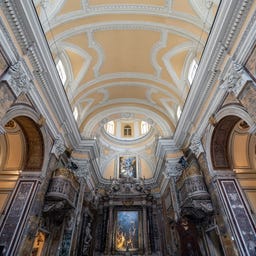
In the Via dei Tribunali, you will find one of the most unusual churches in Naples: the Chiesa di Santa Maria delle Anime del Purgatorio ad Arco, built in 1616, impresses with its striking Baroque facade adorned with skull motifs.
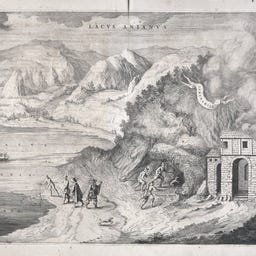
In the Grotta del Cane, a historic cave in the volcanic Campi Flegrei area, you will encounter a fascinating natural phenomenon: natural carbon dioxide accumulates at the bottom, which can be dangerous for small animals - hence the name "Dog Cave."
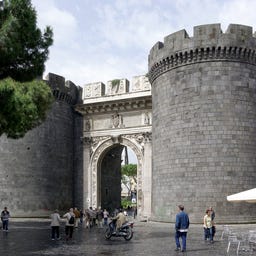
The impressive Porta Capuana is one of the most significant city gates of Naples, built in 1484 by King Ferrante d'Aragona as the eastern entrance. The archway, designed in Renaissance style by Giuliano da Maiano, is made of white marble and flanked by two symbolic towers, richly adorned with reliefs.
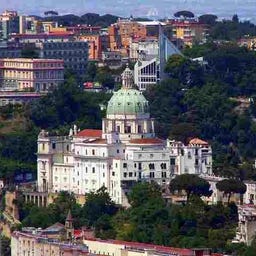
The basilica, also known as "La piccola San Pietro," owes its existence to the spiritual vision of Maria di Gesù Landi, whose two miracles were recognized at the end of the 19th century. The building, designed by Vincenzo Veccia, was constructed between 1920 and 1960 and impresses with its resemblance to St. Peter's Basilica in Rome.
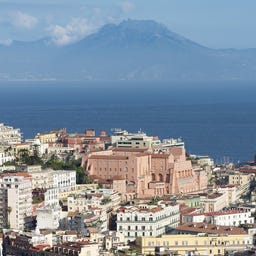
On Monte Echia, a yellow tuff stone rock in the heart of Naples, the first Greek settlement, Partenope, was founded by the Cumaeans at the end of the 8th century BC. The mountain, which later became part of the Roman Castrum Lucullanum, houses the remains of the magnificent villa of Licinius Lucullus as well as a network of ancient caves that were inhabited in prehistoric times.
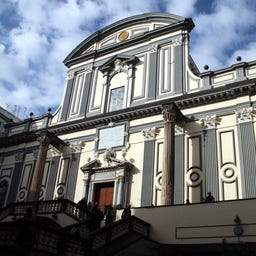
The monumental Basilica di San Paolo Maggiore in the historic center of Naples impressively combines different eras of the city's history: built on the remains of an ancient temple dedicated to the Dioscuri, two Corinthian columns in the facade still testify to that time.
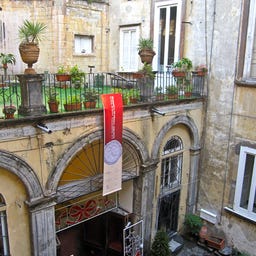
The Palazzo Venezia has been a testament to the close ties between the Republic of Venice and the Kingdom of Naples since the early 15th century. As the former residence of the Venetian consuls, the palace flourished in the 15th and 16th centuries before facing dramatic times during the plague of 1656 and the earthquake of 1688.

In the Basilica di San Giovanni Maggiore, one of the oldest churches in Naples from the 4th century, you can expect a fascinating blend of early Christian, Baroque, and Neoclassical architecture.
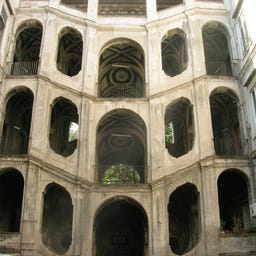
In the heart of the Rione Sanità district stands the impressive Palazzo Sanfelice, built by the Neapolitan architect Ferdinando Sanfelice as a family residence between 1724 and 1728. The magnificent façade captivates with its seven-window axes over two floors, while inside, visitors are greeted by two remarkable courtyards - one octagonal and the other rectangular.
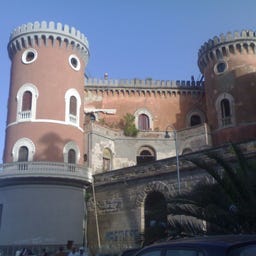
The majestic Villa Volpicelli stands in the Posillipo district overlooking the Bay of Naples, and its distinctive cylindrical tower silhouette can already be seen in historical city views from the 17th century. Behind high walls lies a sprawling garden that slopes down towards the sea, adjacent to the neighboring Villa Rosebery.
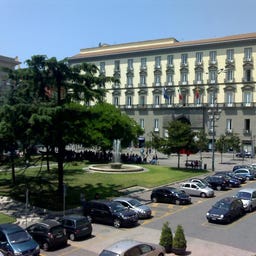
The Piazza del Municipio is one of the largest squares in Europe and forms the historical center of Naples alongside the majestic Maschio Angioino and the harbor. Originally known as "Largo del Castello," the square underwent significant changes after the unification of Italy in 1861, leading to the removal of old military buildings.
High above Naples, the Casa del Volto Santo stands on the Capodimonte hill - a modern sanctuary with an impressive panoramic view of the city. The sanctuary is rooted in a mystical experience of Flora De Santis in 1932 and was reopened in 1996 after earthquake damage.
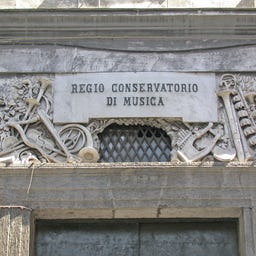
In the historic center of Naples, you'll find the Conservatorio di San Pietro a Majella, one of the most important music schools in Italy, founded in 1808 and located in a former Celestine monastery.
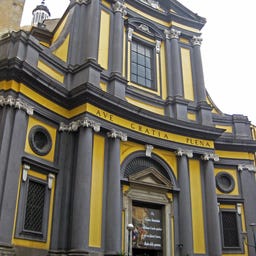
Founded in the 13th century, the Basilica della Santissima Annunziata Maggiore is one of the most significant Baroque churches in Naples, featuring an impressive dome designed by Carlo Vanvitelli that rises 67 meters high. The complex has a tumultuous history, including a hospital, monastery, and orphanage, but it was the devastating fire of 1757 that primarily shaped the church's current appearance.
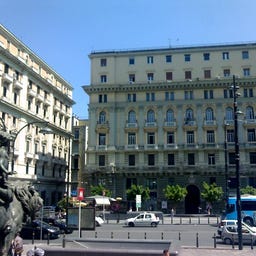
Piazza Giovanni Bovio, known locally as Piazza Borsa, was created at the end of the 19th century during the major urban renovation following the cholera epidemic of 1884. Here, you can find the impressive Palazzo della Borsa and a remarkable 80-ton statue of Vittorio Emanuele II, which was inaugurated in 1897.

In the Basilica di Santa Maria della Sanità, also known as the Chiesa di San Vincenzo, you will find one of the first monumental examples of the Counter-Reformation in Naples. Completed in the early 17th century, the church impresses with its circular architecture, a striking dome adorned with yellow-green majolica tiles, and significant artworks by Luca Giordano.
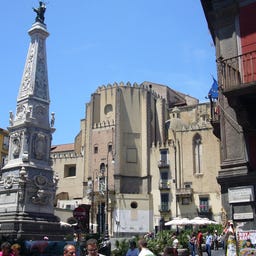
On the historic Piazza San Domenico Maggiore, which once marked the eastern boundary of Greek Naples, the important streets Spaccanapoli and Via Mezzocannone intersect today. The striking Obelisk of San Domenico, a gift of gratitude from the people after surviving a plague, dominates the square lined with magnificent noble palaces.
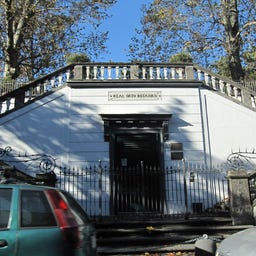
In the heart of Naples, the historic Orto botanico di Napoli spans 12 hectares. It was founded in 1807 by Giuseppe Bonaparte and opened to the public in 1811 under the direction of Michele Tenore.
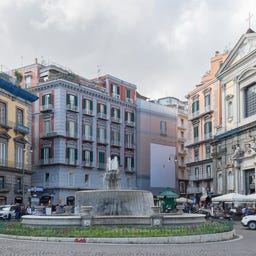
The Piazza Trieste e Trento is one of the most important squares in Naples, where the bustling Via Toledo intersects with Via Chiaia and Via San Carlo. Here, you’ll find some of the city’s most significant buildings, including the magnificent Teatro San Carlo, the Palazzo Reale, and the Chiesa di San Ferdinando from the 17th century. The square, known as Piazza San Ferdinando until 1919, is adorned with the striking Fontana del Carciofo and serves as the gateway to the famous Piazza del Plebiscito. In the historic Caffè Gambrinus, where Gabriele D'Annunzio once frequented, you can take in the atmosphere of the square while enjoying a traditional espresso.
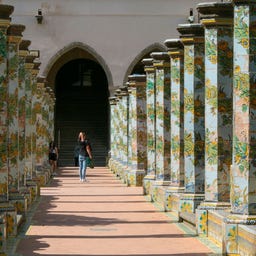
In the heart of the Santa Chiara Monastery in Naples, you discover one of the most beautiful cloisters in Italy - the Chiostro maiolicato from the 18th century. Designed by Domenico Antonio Vaccaro in 1739, this cloister captivates with 72 octagonal columns and intricately painted majolica tiles depicting Neapolitan everyday scenes from the 17th and 18th centuries.

In the green oasis of the Vomero district stands the Villa Floridiana, a neoclassical estate from the early 19th century, built by Ferdinand IV of Bourbon for his second wife Lucia Migliaccio. The expansive park enchants with winding paths, shady groves, and about 150 different plant species, including magnificent camellias, oaks, and pines.
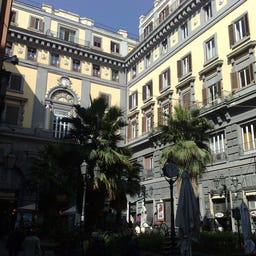
In the historic center of Naples, you'll find the Teatro Augusteo, a traditional theater from the 1920s built on the site of an even older theater from 1772. The elegant building features a rising auditorium and, after a tumultuous history—including a closure during World War II and extensive renovations—has regained its original form since 1992.
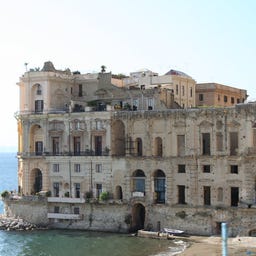
At the beginning of the Via Posillipo, the majestic Palazzo Donn'Anna stands directly above the sea - an unfinished masterpiece of Neapolitan Baroque from the 17th century. The architect Cosimo Fanzago designed the palace between 1640 and 1648 for Donna Anna Carafa, the wife of the then viceroy, but her early death during a popular uprising left the ambitious project incomplete.
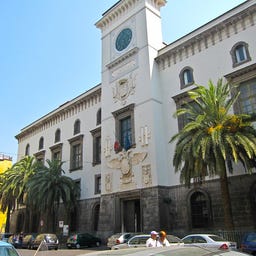
As the oldest castle in Naples after the Castel dell'Ovo, the Castel Capuano, built in the 12th century by William I of Sicily, stands at the entrance of Via dei Tribunali. Within its sturdy walls, not only magnificent royal weddings took place - including that of Emperor Frederick III - but also dramatic events like political murders. After Charles V celebrated his Tunis campaign here in 1535, the viceroy transformed the castle into a courthouse two years later. Today, this historic building, which was constructed on the foundations of a Roman fortress, houses the School of the Judiciary and is closed to the public during ongoing restoration work.

In the heart of Naples, between the neighborhoods of Montecalvario and San Giuseppe, you will find Piazza Carità - a historic square with a vibrant past. Originally known as a bustling marketplace, the square gained its defining landmark in the 16th century with the Church of Santa Maria della Carità.
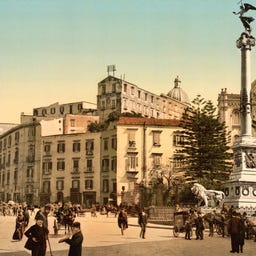
The elegant Piazza dei Martiri in the affluent Chiaia district reflects Naples' tumultuous history in the struggle for freedom. At the center of this square, established in the 17th century, stands a column designed by Luigi Catalani, originally intended as a symbol of peace and now dedicated to all Neapolitan freedom fighters.

In the historic Teatro San Ferdinando, the temple of Neapolitan comedy near Rione Sanità, you experience authentic Italian theater in a venue with a rich history. After its opening in 1791, the theater went through ups and downs, was heavily damaged during World War II, and was saved in 1948 by theater legend Eduardo De Filippo.
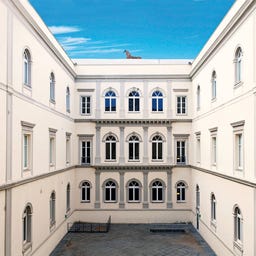
In the historic center of Naples, you can discover a fascinating blend of old and new at the Museo d'arte contemporanea Donnaregina: the impressive Palazzo Donnaregina from the 18th and 19th centuries even incorporates parts of the ancient city wall from the 5th-4th centuries BC.
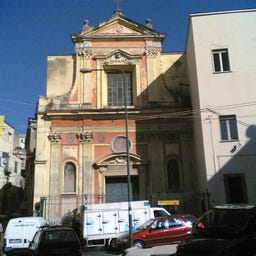
In the lively Rione Sanità of Naples, you will find the Chiesa di San Severo, built on the burial site of Bishop Severo from the late 4th century. The current church, constructed in 1573 under Archbishop Mario Carafa and extensively renovated in 1680, impresses with its Latin cross layout and valuable art treasures.
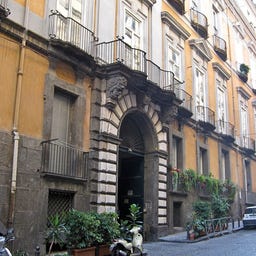
In the early 18th century, the Serra di Cassano, originally from Genoa, built their magnificent city palace on the slopes of Pizzofalcone in Naples. The architectural highlight is the monumental staircase designed by Ferdinando Sanfelice, which captivates with its interplay of piperno stone and white marble. The octagonal courtyard and opulent halls adorned with frescoes by Giacinto Diano reflect the former glory of the noble house, which even hosted a royal ball during the Olympic Games in 1960. Since 1799, the main entrance has remained closed as a quiet reminder of the executed Gennaro Serra di Cassano—a poignant gesture that continues to this day.
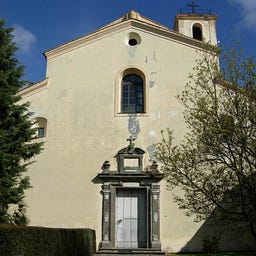
High above Naples, the hermitage complex Camaldoli, founded in the 16th century by Giovanni d'Avalos, sits atop the city's highest hill. The building, designed in the late Renaissance style by Domenico Fontana, features a single-nave church with six side chapels, the main altar of which was created by the famous Cosimo Fanzago.
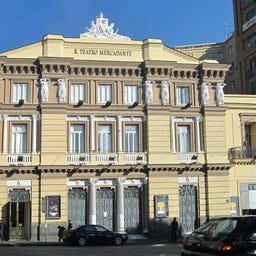
In the historic center of Naples, you will find the Teatro Mercadante, a classic opera house from the 18th century featuring a distinctive horseshoe-shaped auditorium and four tiers of boxes. Opened in 1779 and originally known as the "Teatro del Fondo," this theater has hosted musical greats like Mozart, Rossini, and Donizetti, and was renamed in 1870 in honor of the composer Saverio Mercadante.

The Chiesa di San Giorgio Maggiore in the heart of Naples has a rich history that dates back to the 4th century when it was known as "la severiana." Over the centuries, the church has undergone several renovations, most notably the work of architect Cosimo Fanzago after a devastating fire in 1640 and the restorations by Arcangelo Guglielmelli following the earthquake of 1688.
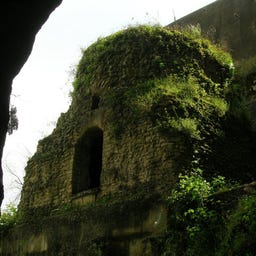
In this historic park above the church Santa Maria di Piedigrotta, you will find the traditionally attributed tomb of Virgil, which has been attracting visitors since the 17th century. The Parco Vergiliano, opened in 1930, houses not only the Roman columbarium but also the impressive marble tomb of the Italian poet Giacomo Leopardi in an artificial grotto.
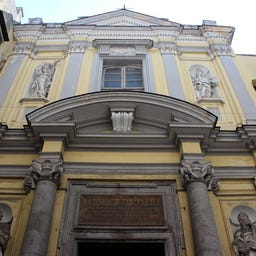
In the bustling Via San Biagio dei Librai, you will discover the Chiesa dei Santi Filippo e Giacomo, also known as the "Chiesa dell'Arte della Seta" - a fascinating testament to the former silk weavers' guild of Naples. Founded in 1591 and completed in 1758 by Gennaro Papa, this Baroque church impresses with its two-story façade adorned with remarkable statues of saints by Giuseppe Sanmartino and Giuseppe Picano.

At Piazza Sannazaro, the majestic Fontana della Sirena appears - a fountain that recalls the tragic legend of the siren Partenope and her unfulfilled love for Ulysses.
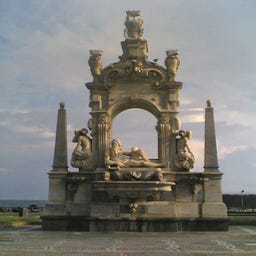
On the promenade Via Francesco Caracciolo, you will find the magnificent Fontana del Sebeto, a baroque fountain from the 17th century created by the renowned architect Cosimo Fanzago. The impressive fountain features an old man as the central figure, symbolizing the ancient river Sebeto, flanked by two Tritons and sea monsters, from whose mouths water flows into the marble basins.
